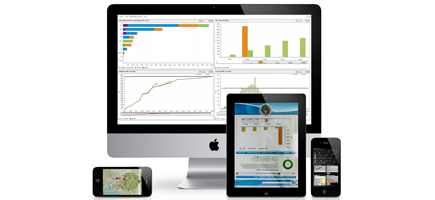Recently the Department of Energy approved submitting the Recovery Dashboard for the Adobe MAX awards. As part of that they put up a demo video of the dashboard:
As a solution for tracking billions of dollars over a diverse set of energy projects, the Department of Energy (DOE) decided to build the Recovery Dashboard. After demonstrating our expertise in the area, Anaara was asked to implement this RIA solution using Adobe Flex. Over the course of the past two years, we were able to leverage our agile development process and user experience design expertise to continuously cope with ever changing requirements from the government with an iterative process. In short, every two or four weeks, we were able to deliver a new release of the dashboard to the DOE.
A bit of background on the Recovery Dashboard is included below:
Back on February 17, 2009 Congress passed the American Recovery and Reinvestment Act of 2009. Through this act, billions of dollars were distributed to many agencies and across the nation.
A direct response to the economic crisis, the Recovery Act has three immediate goals:
- Create new jobs as well as save existing ones
- Spur economic activity and invest in long-term economic growth
- Foster unprecedented levels of accountability and transparency in government spending
 The Recovery Dashboard empowers Department of Energy Executives and Program Managers to obtain data to help manage Recovery Act funding with unprecedented levels of accountability and transparency. The dashboard compares all Recovery funding across standard performance dimensions, simplifying reporting requirements, creating a central data repository, and providing an analytical tool to managers across the Department.
The Recovery Dashboard empowers Department of Energy Executives and Program Managers to obtain data to help manage Recovery Act funding with unprecedented levels of accountability and transparency. The dashboard compares all Recovery funding across standard performance dimensions, simplifying reporting requirements, creating a central data repository, and providing an analytical tool to managers across the Department.
Here’s a demo of the Recovery Dashboard running on iPad:


Leave a Reply